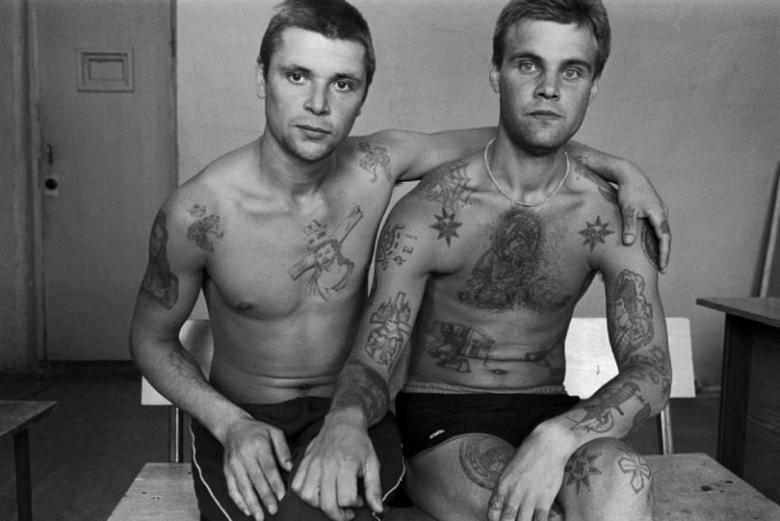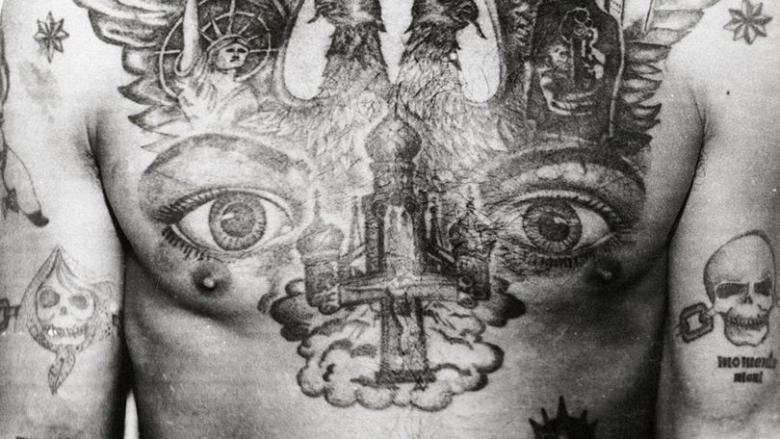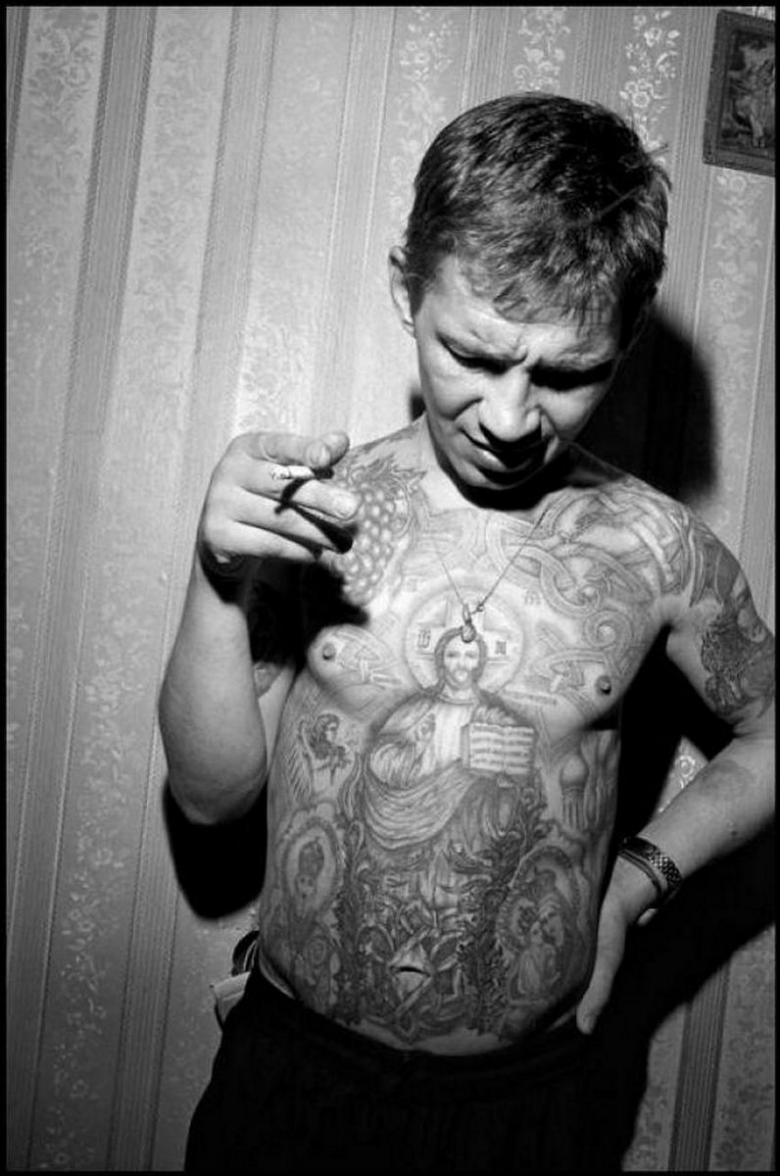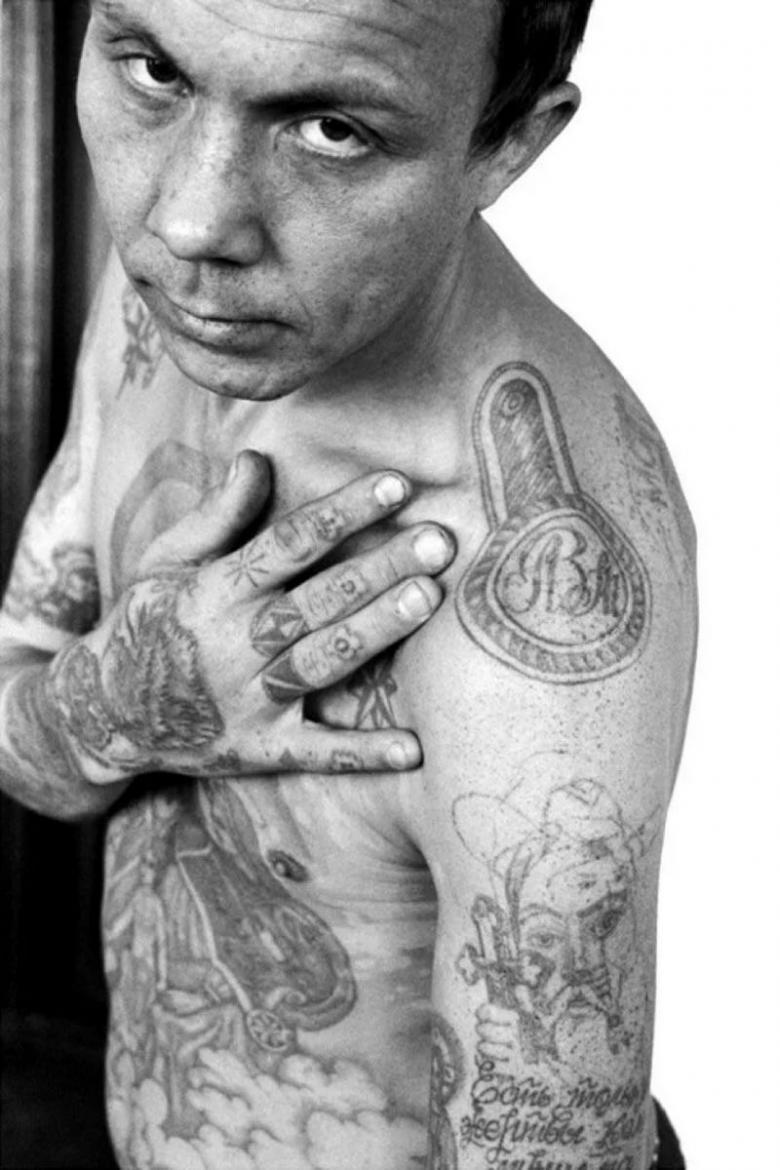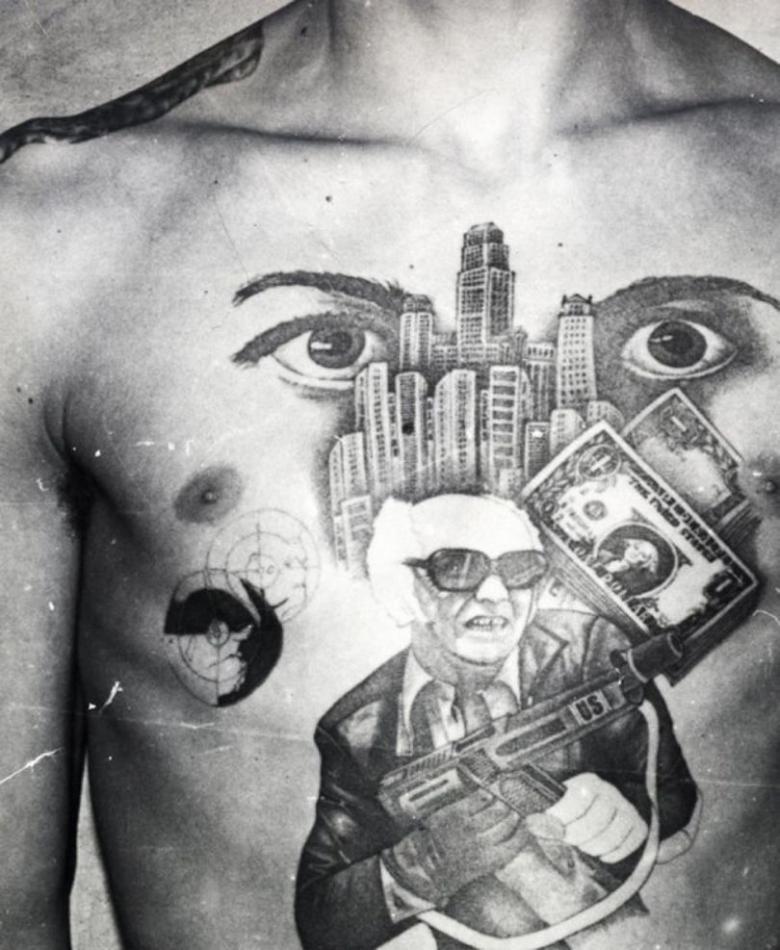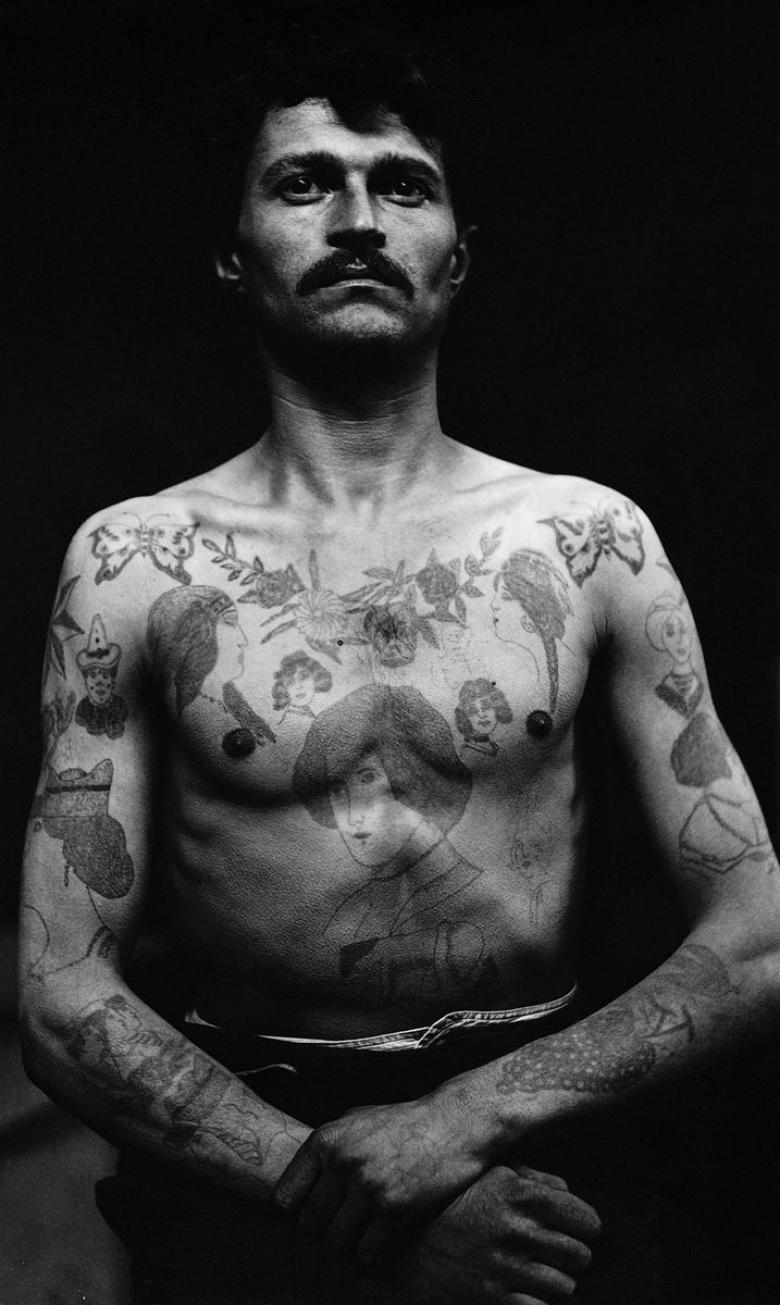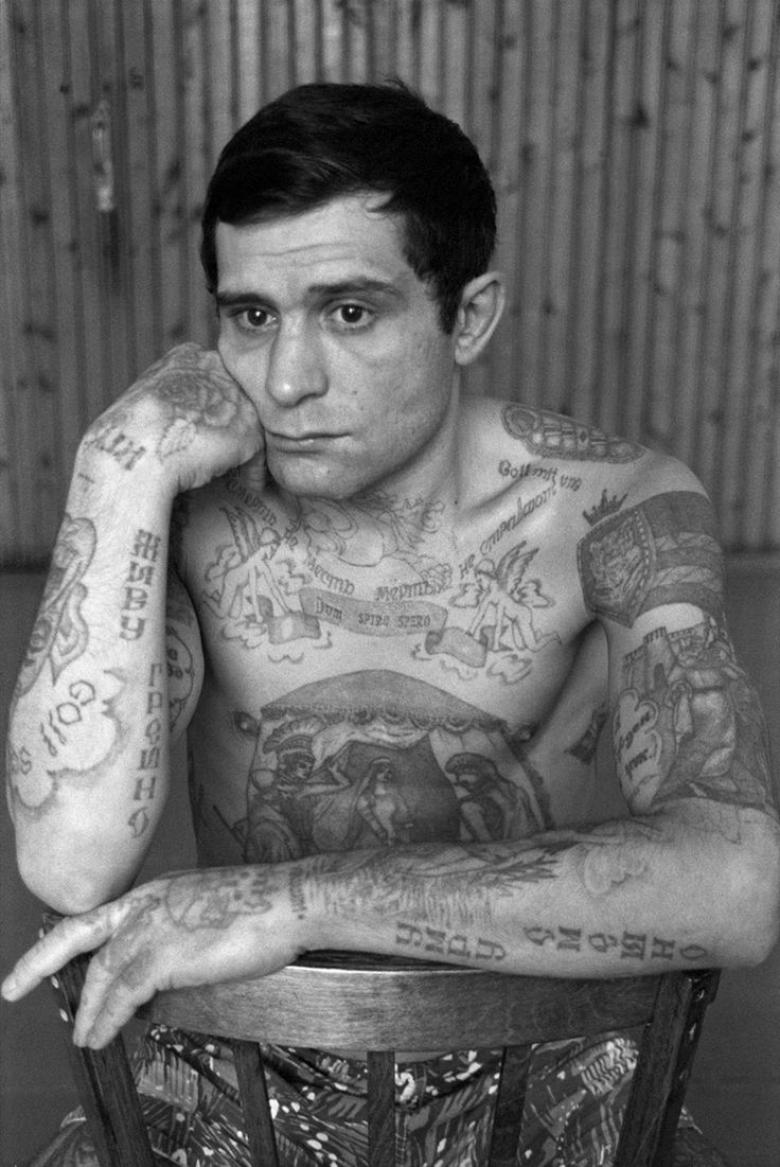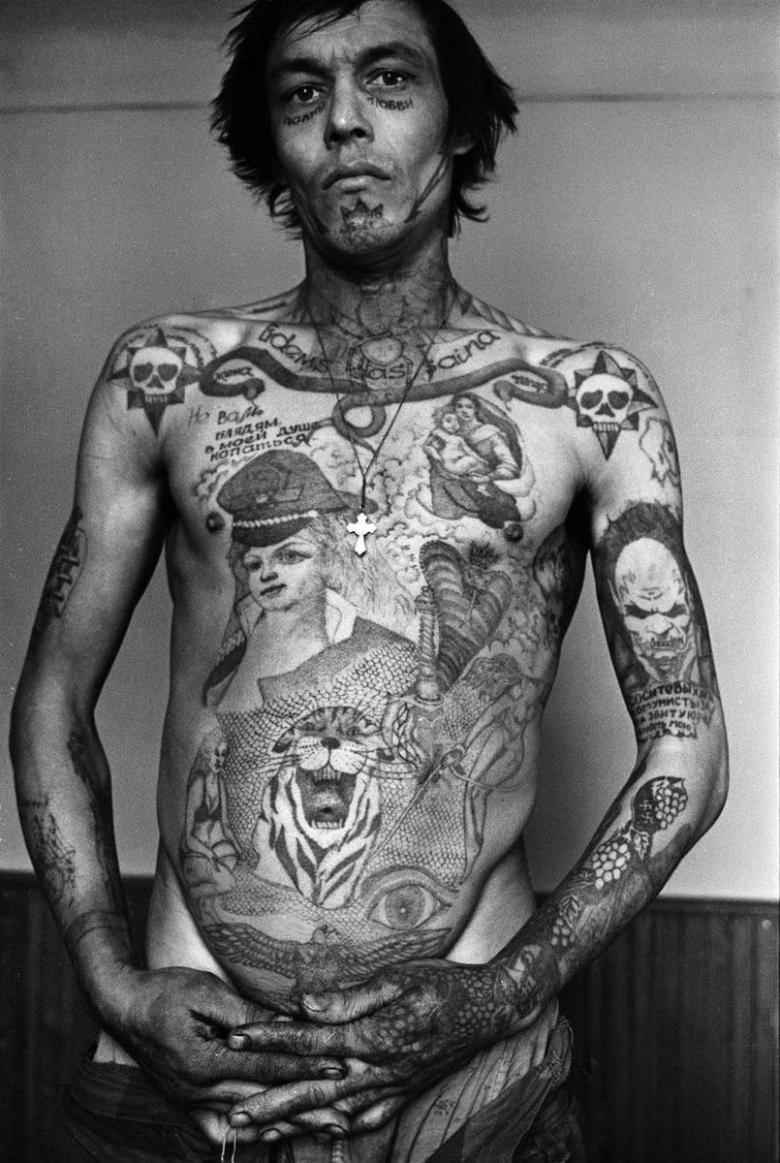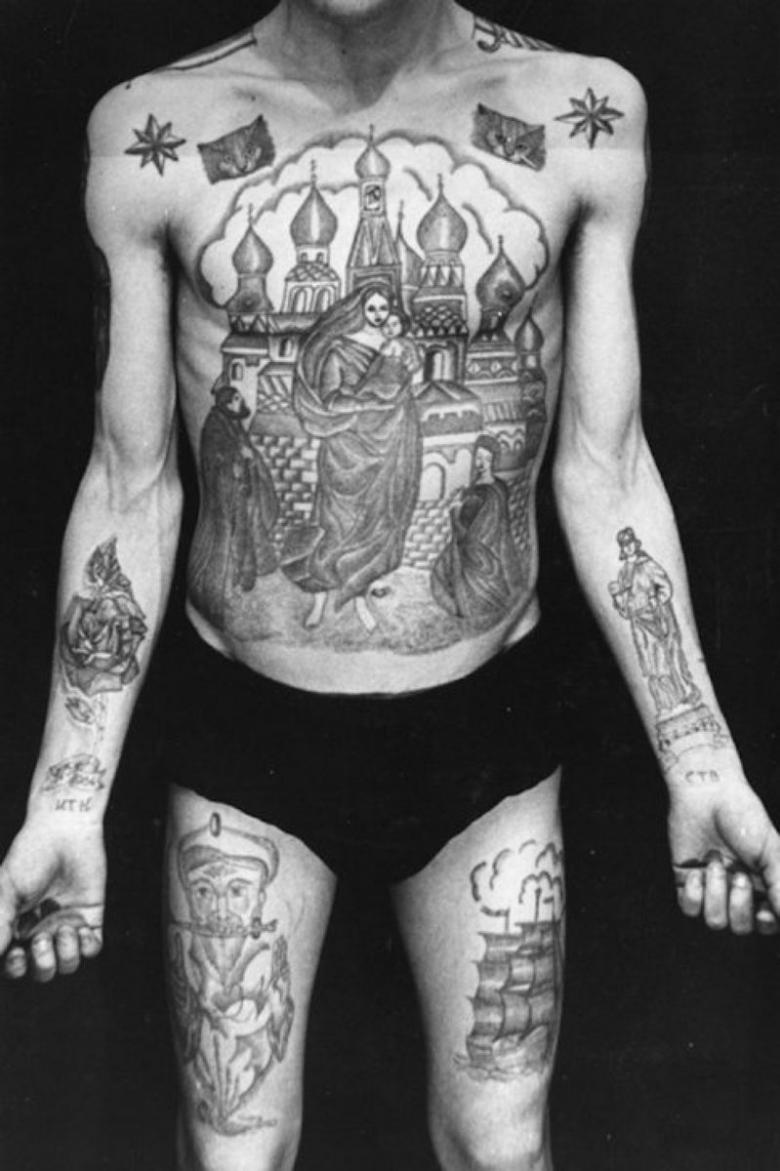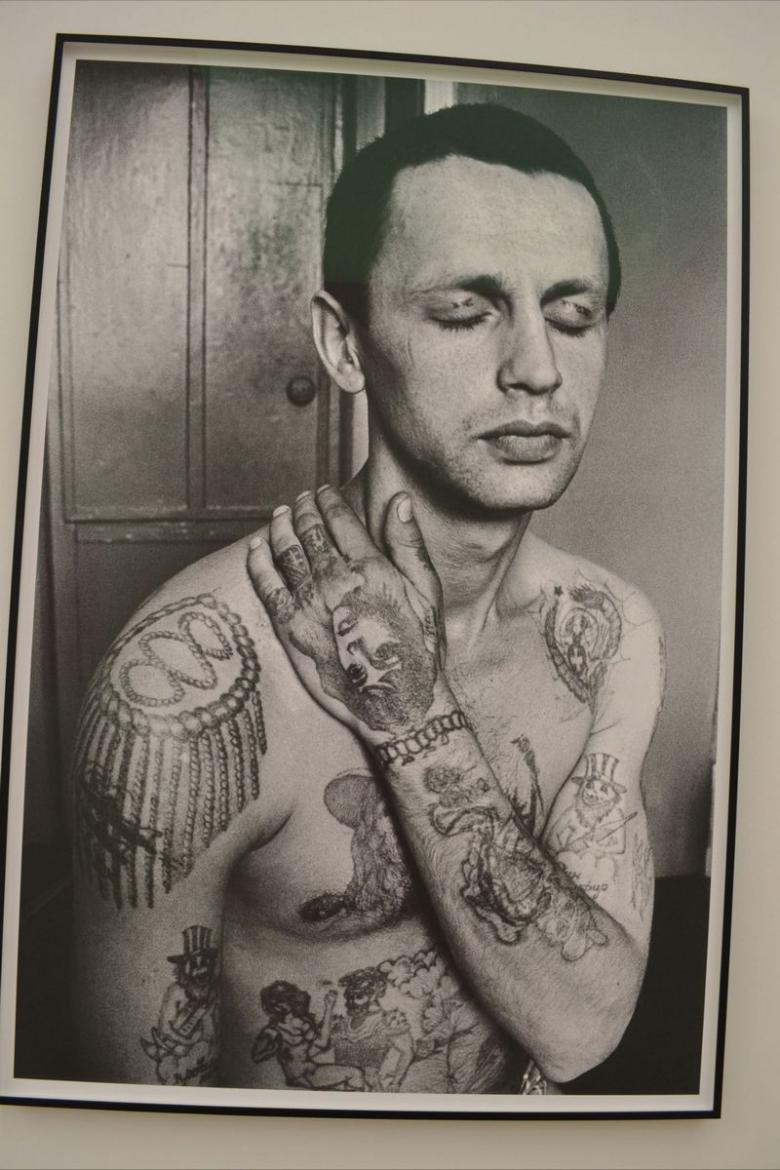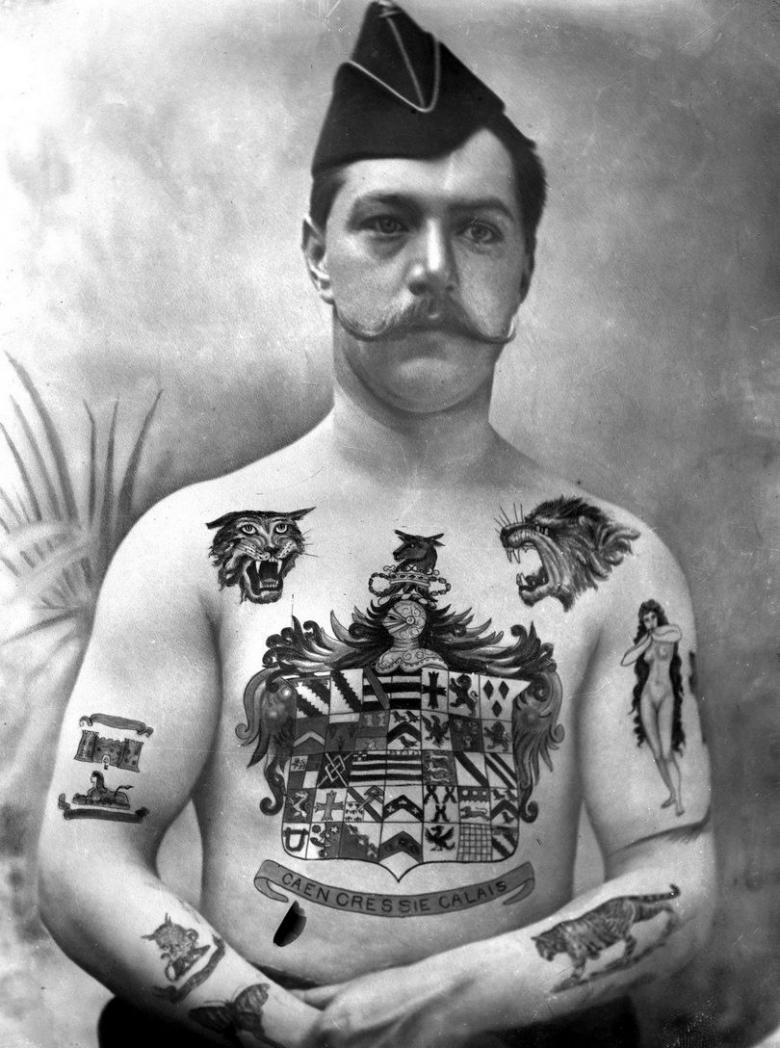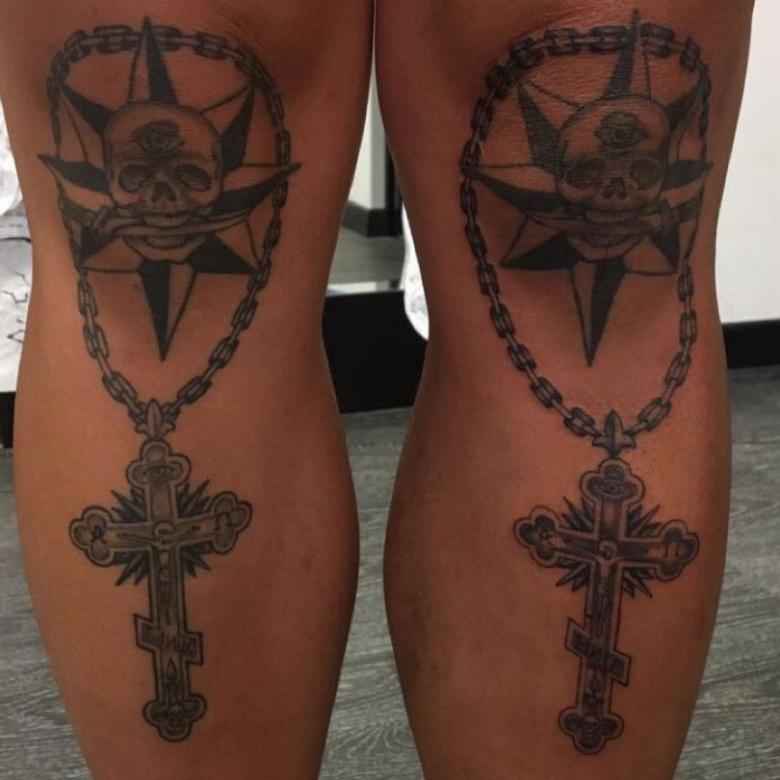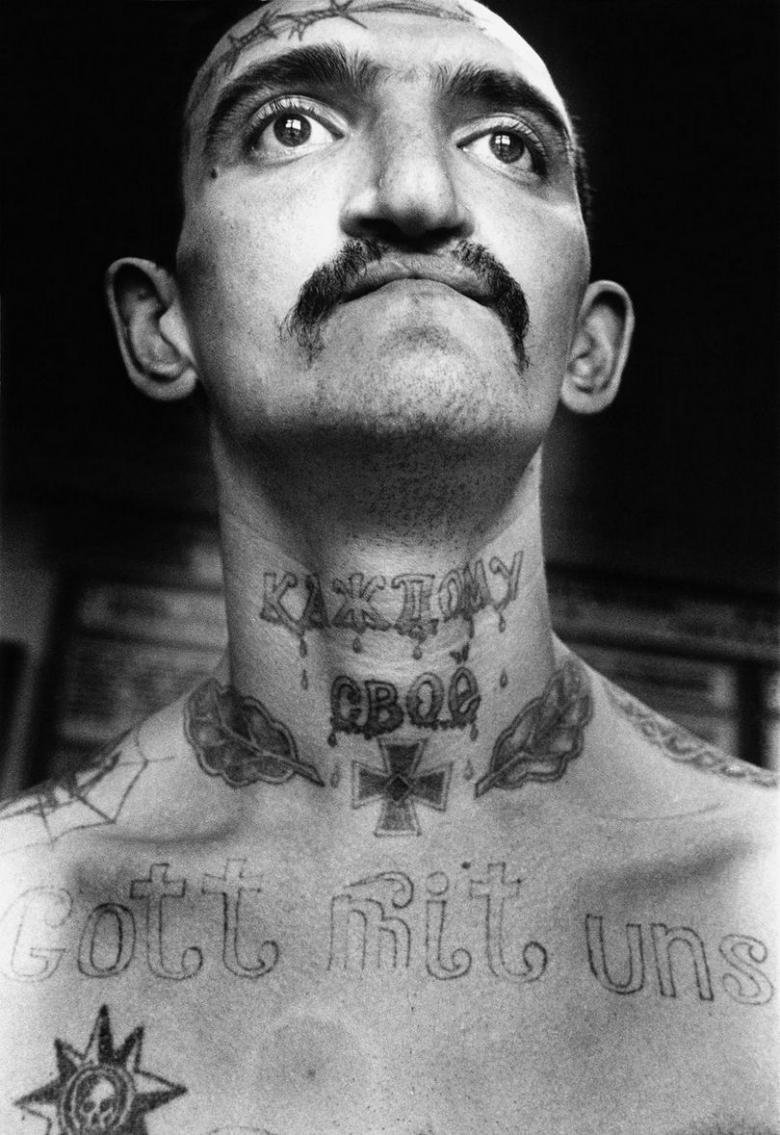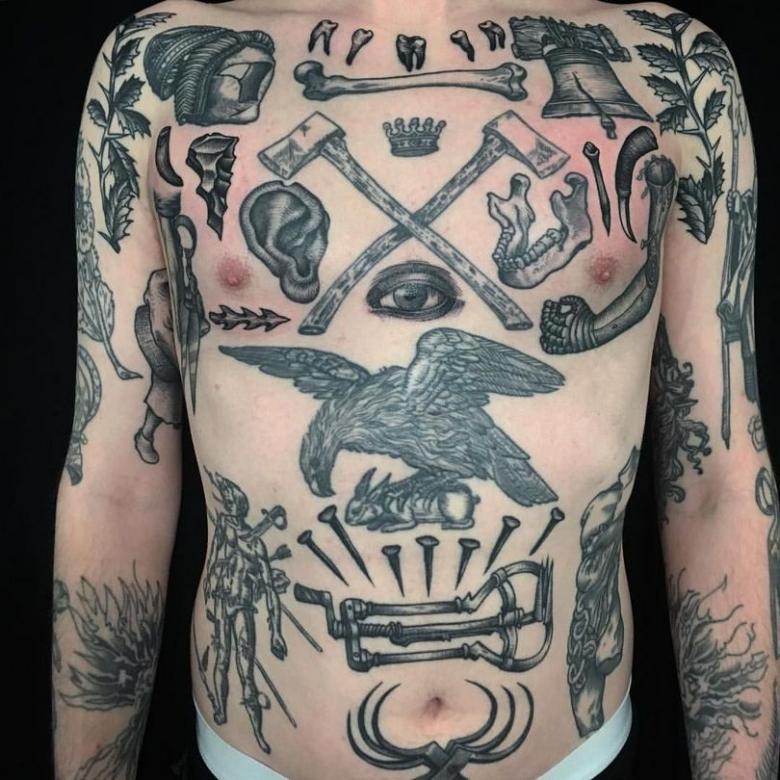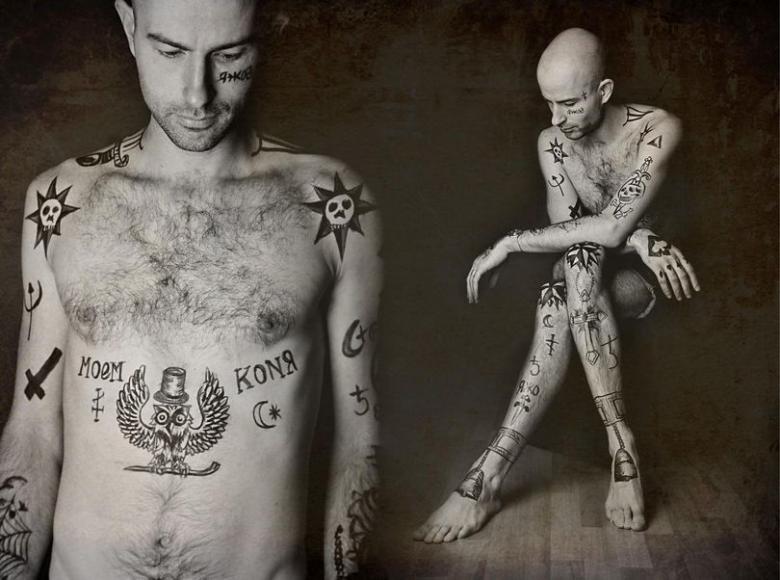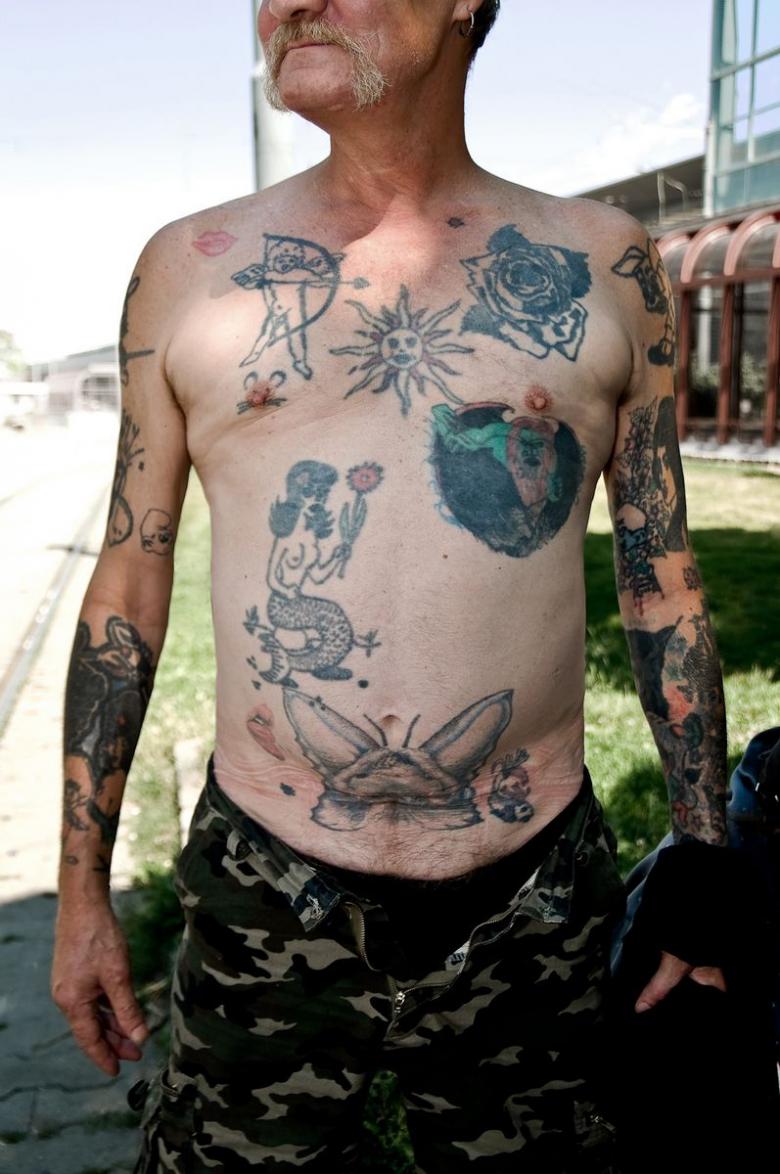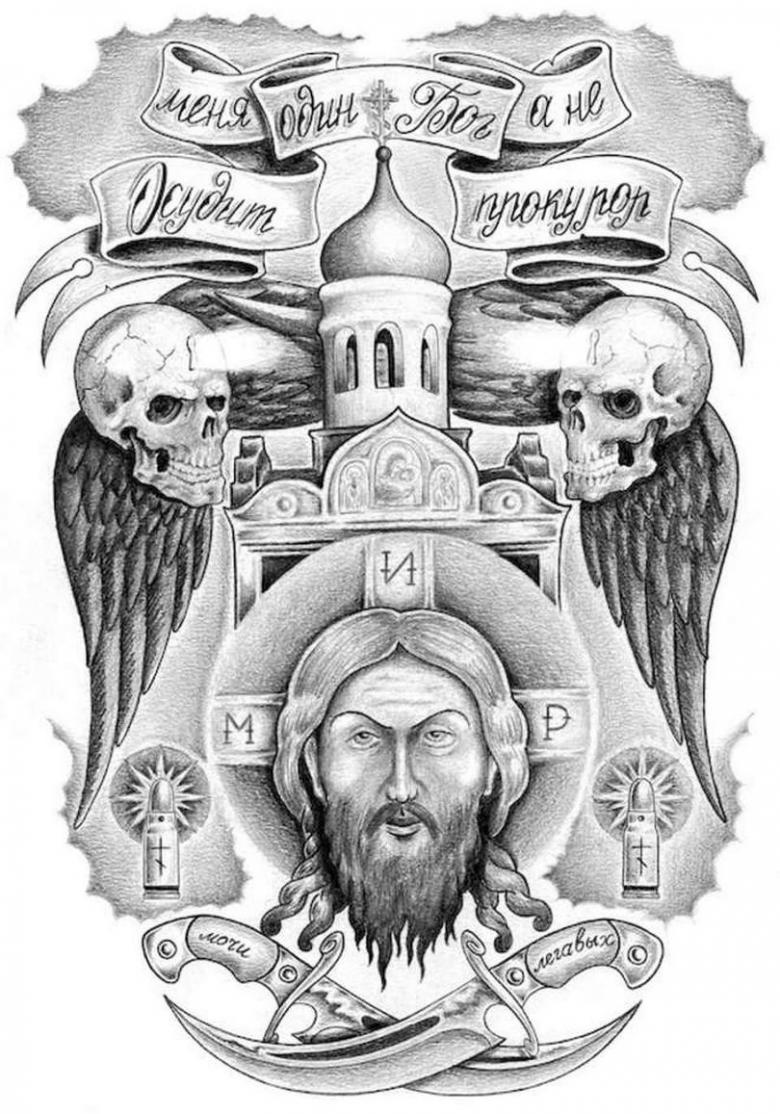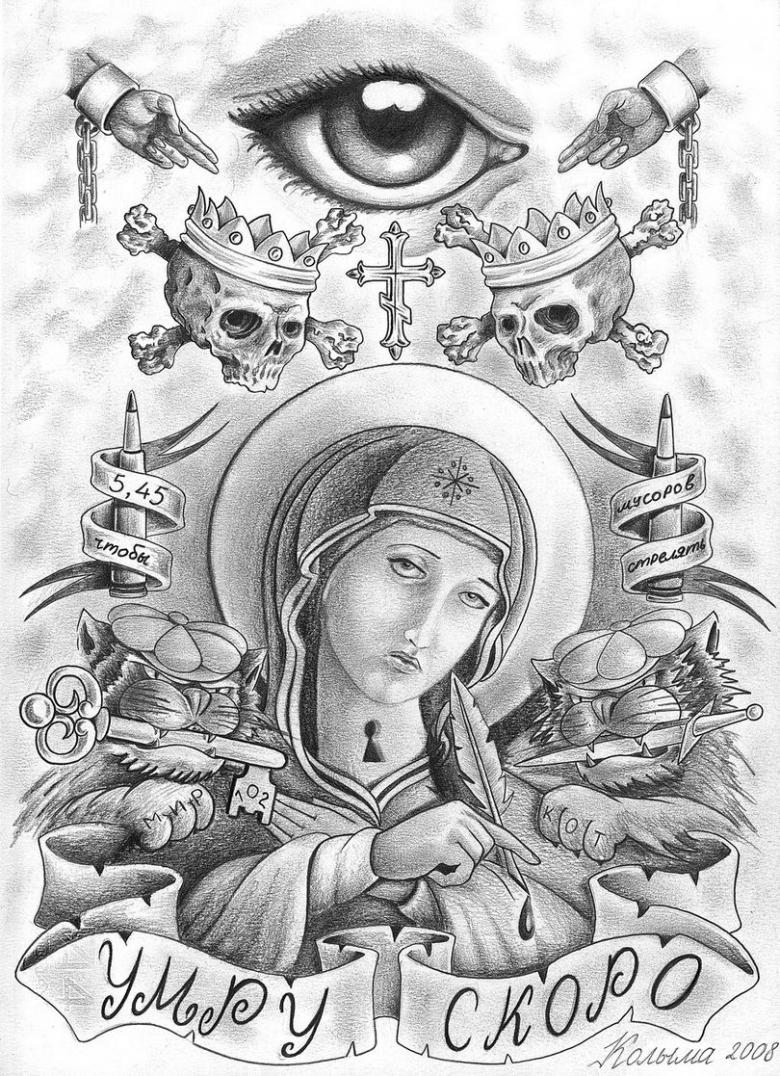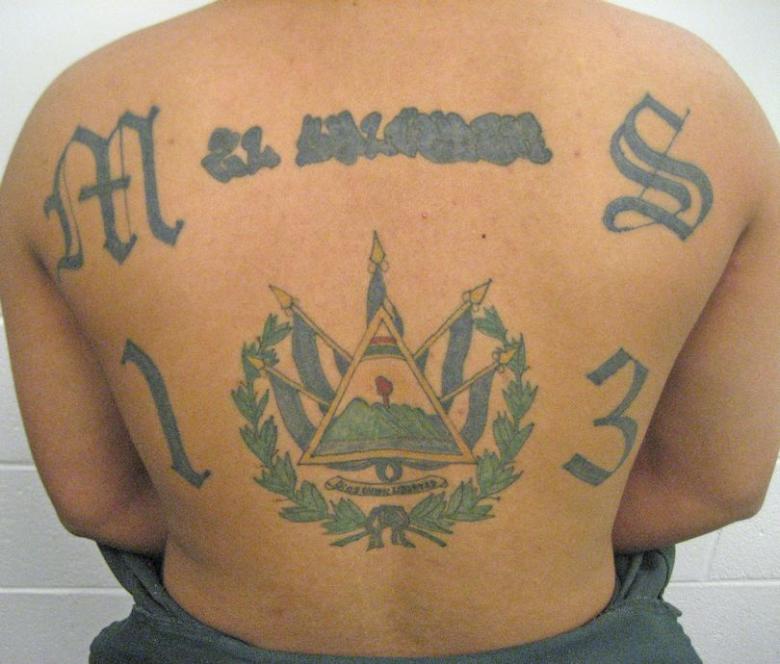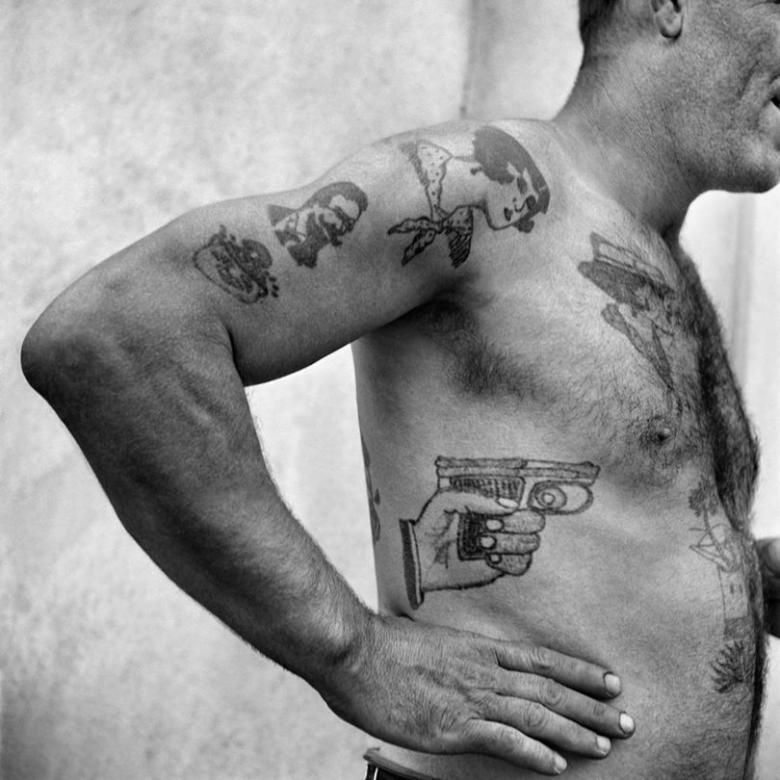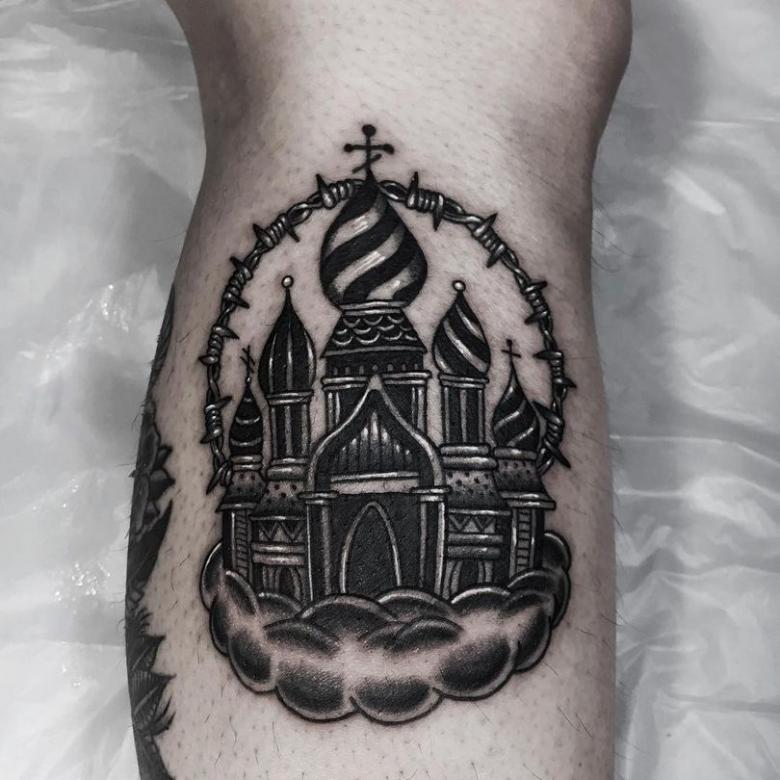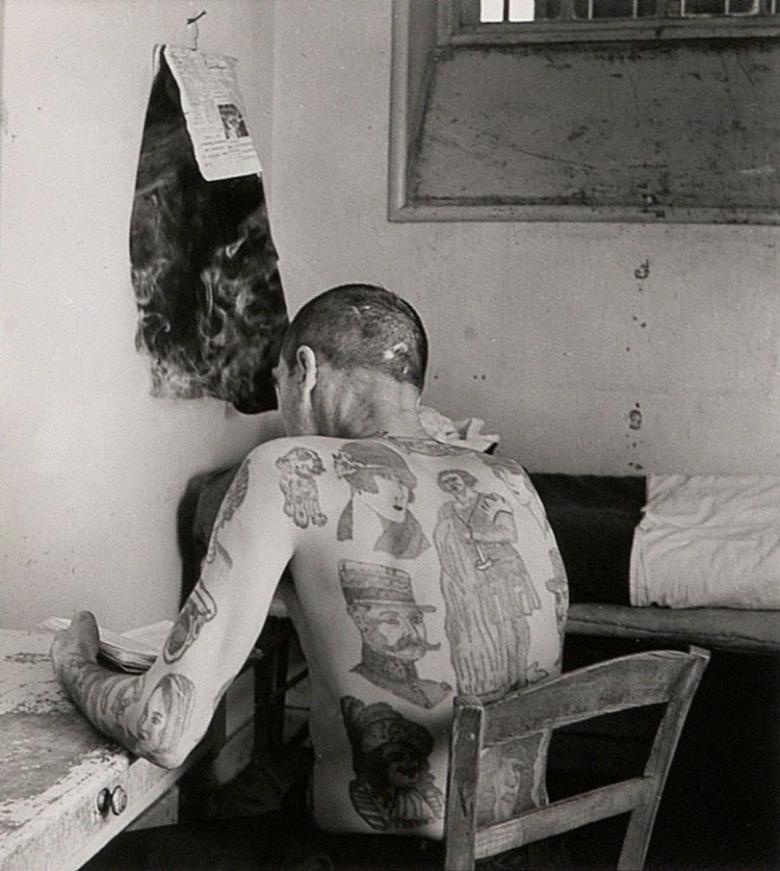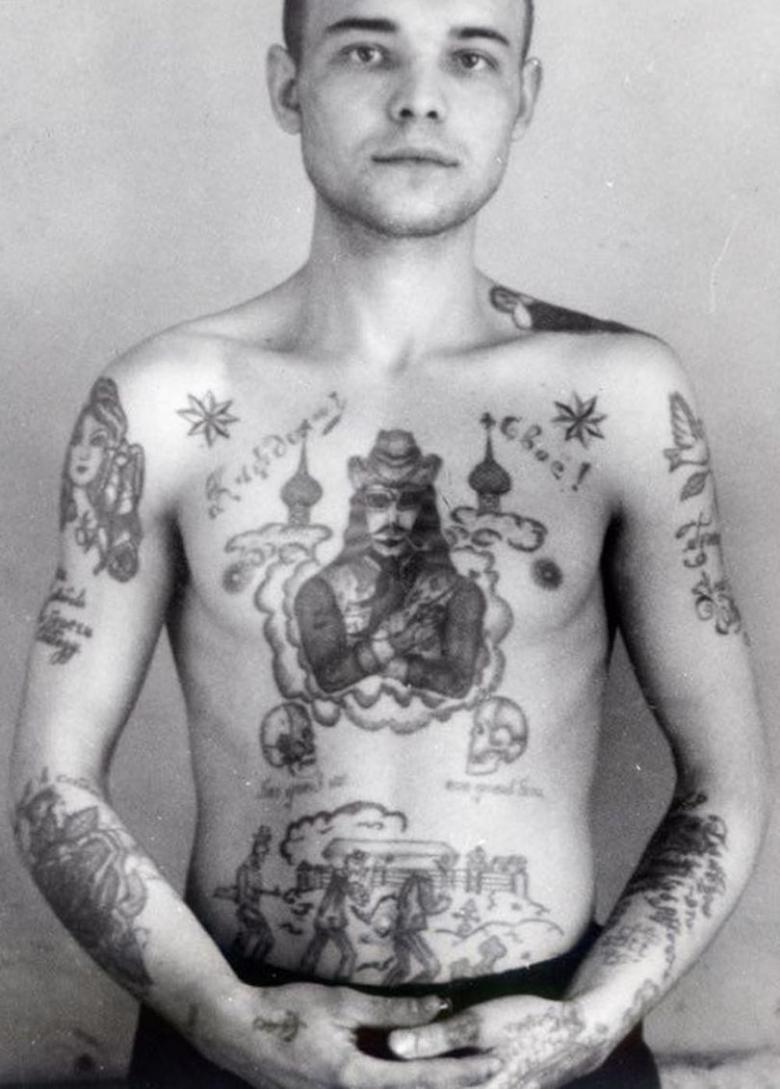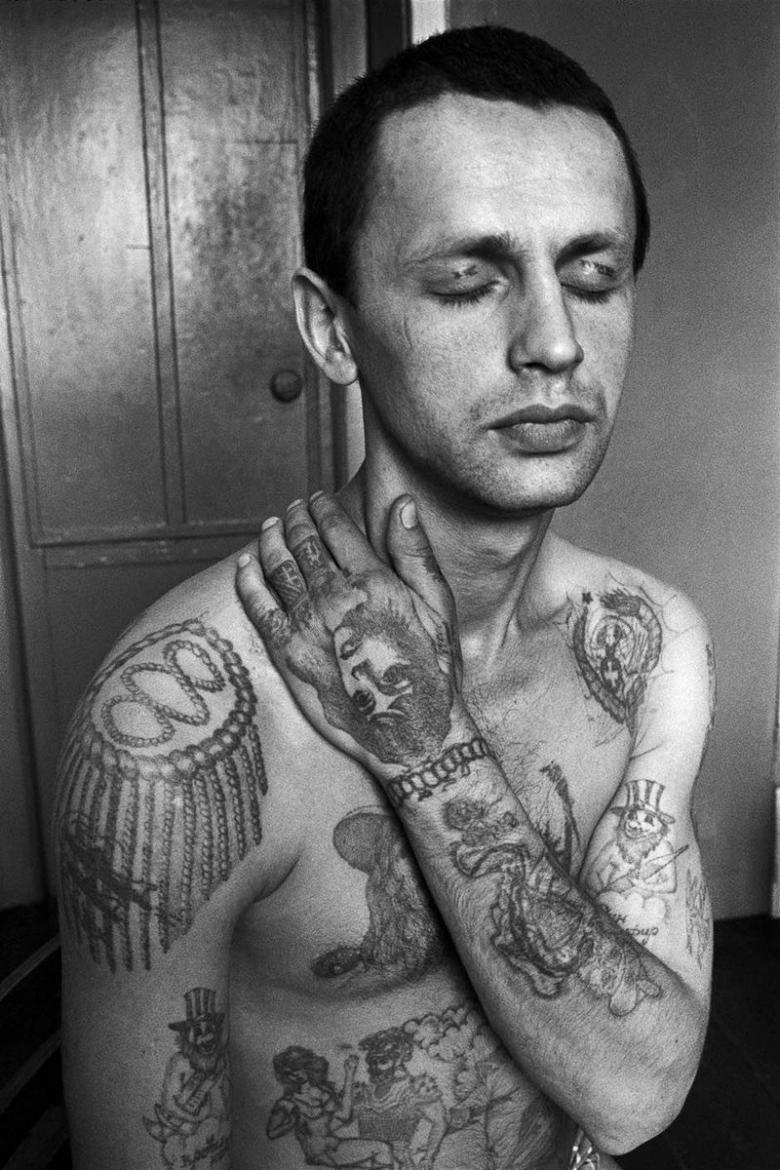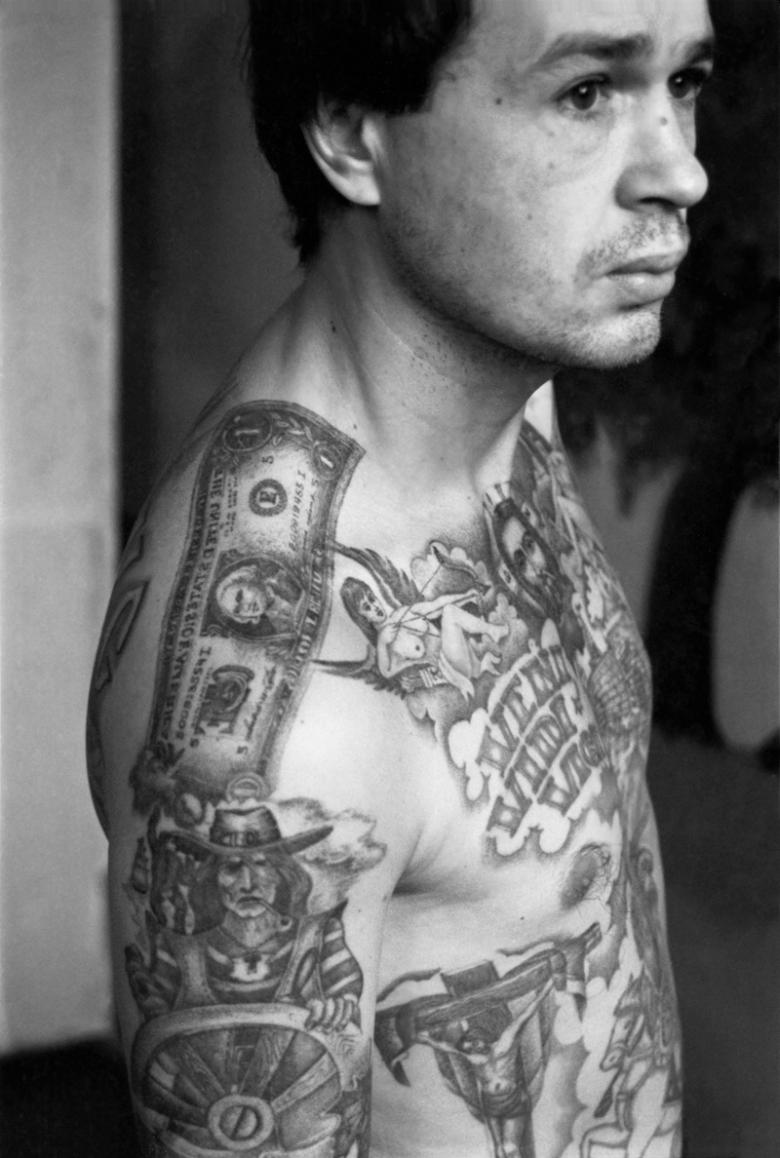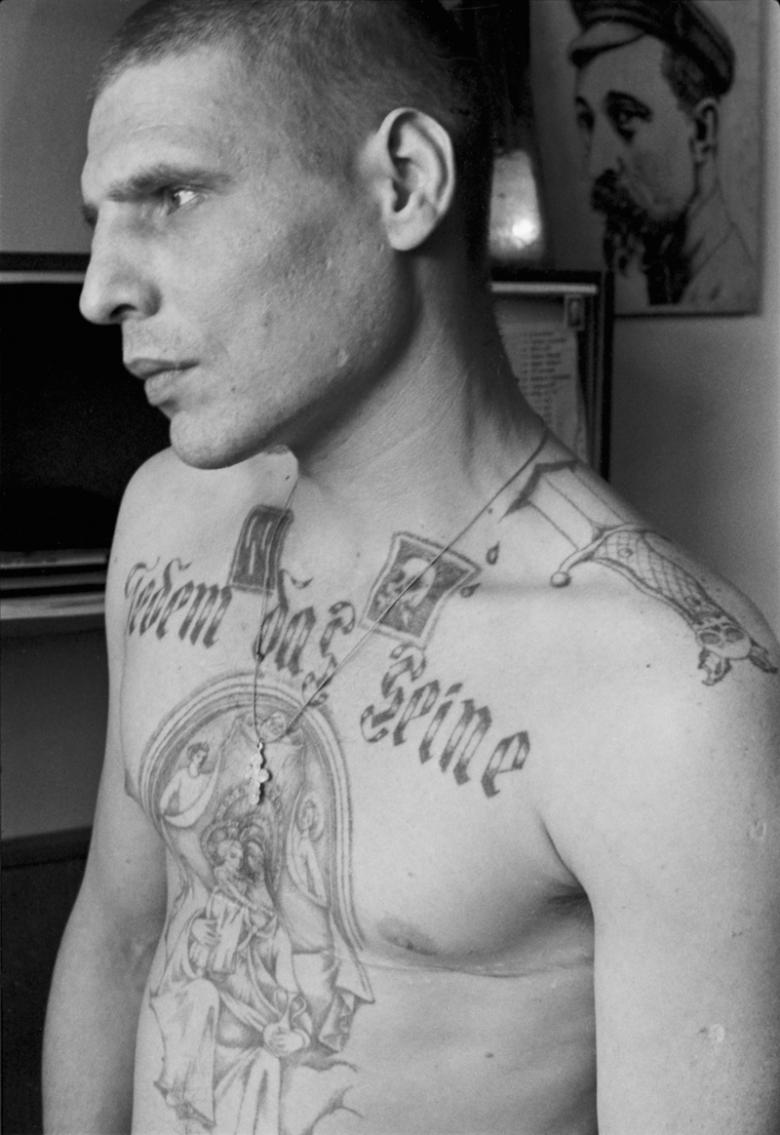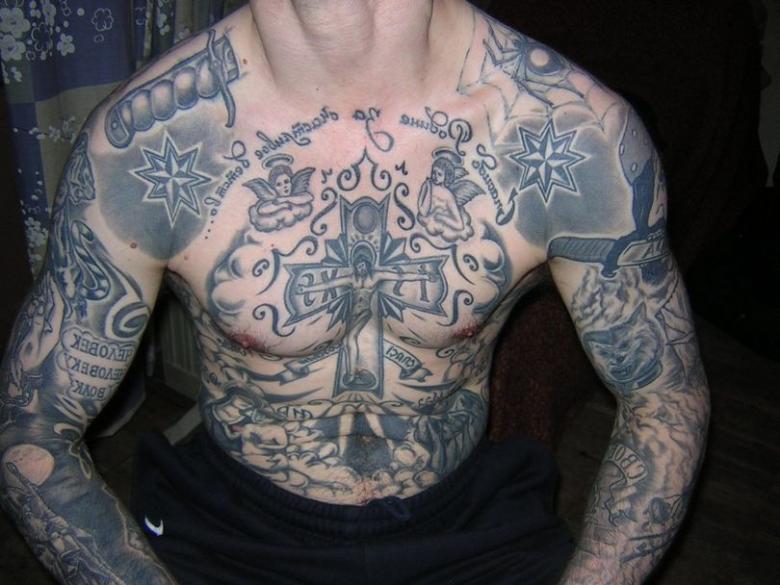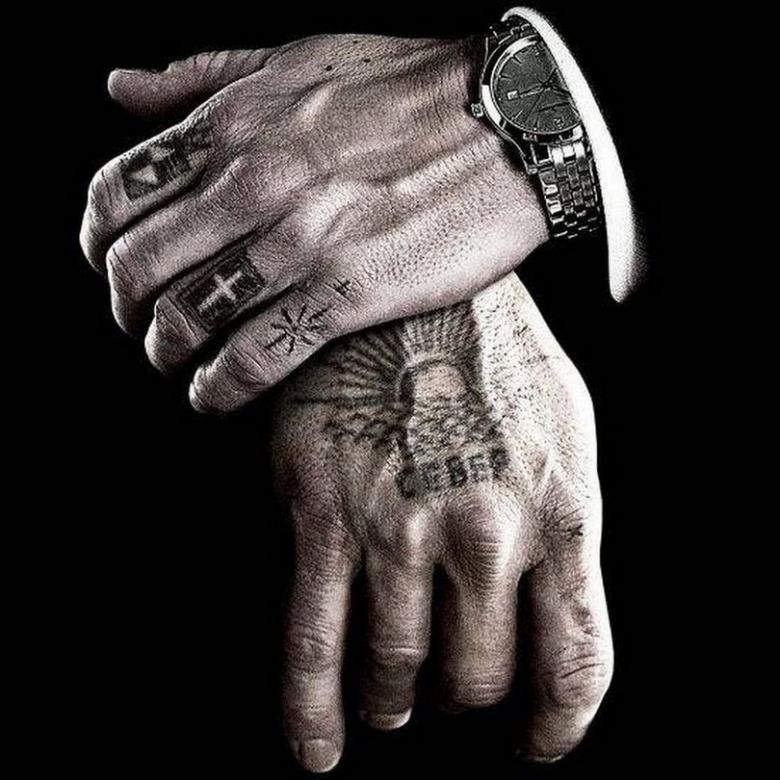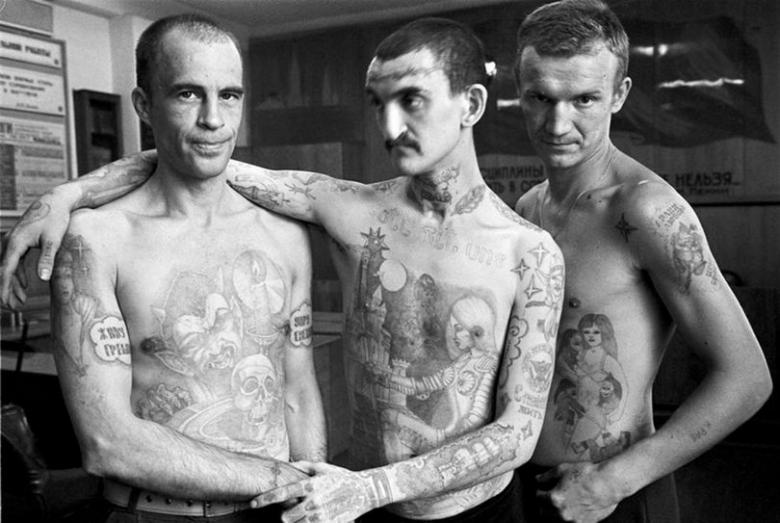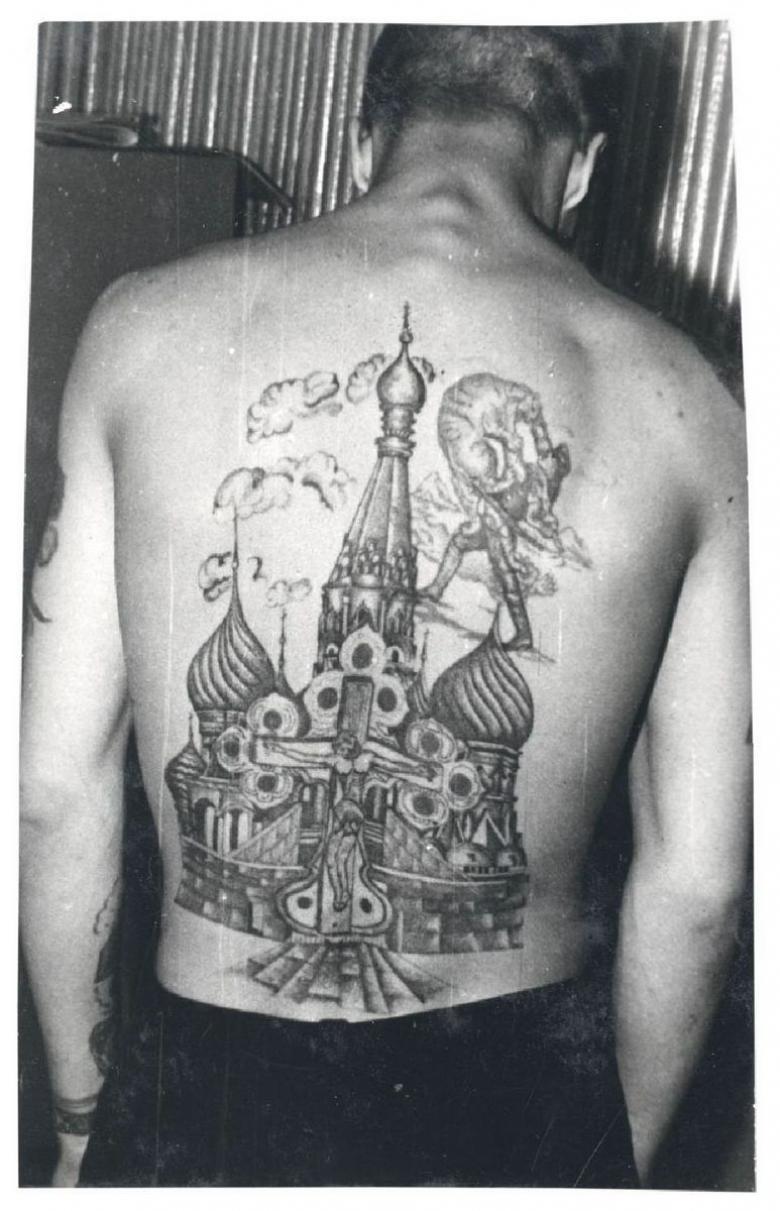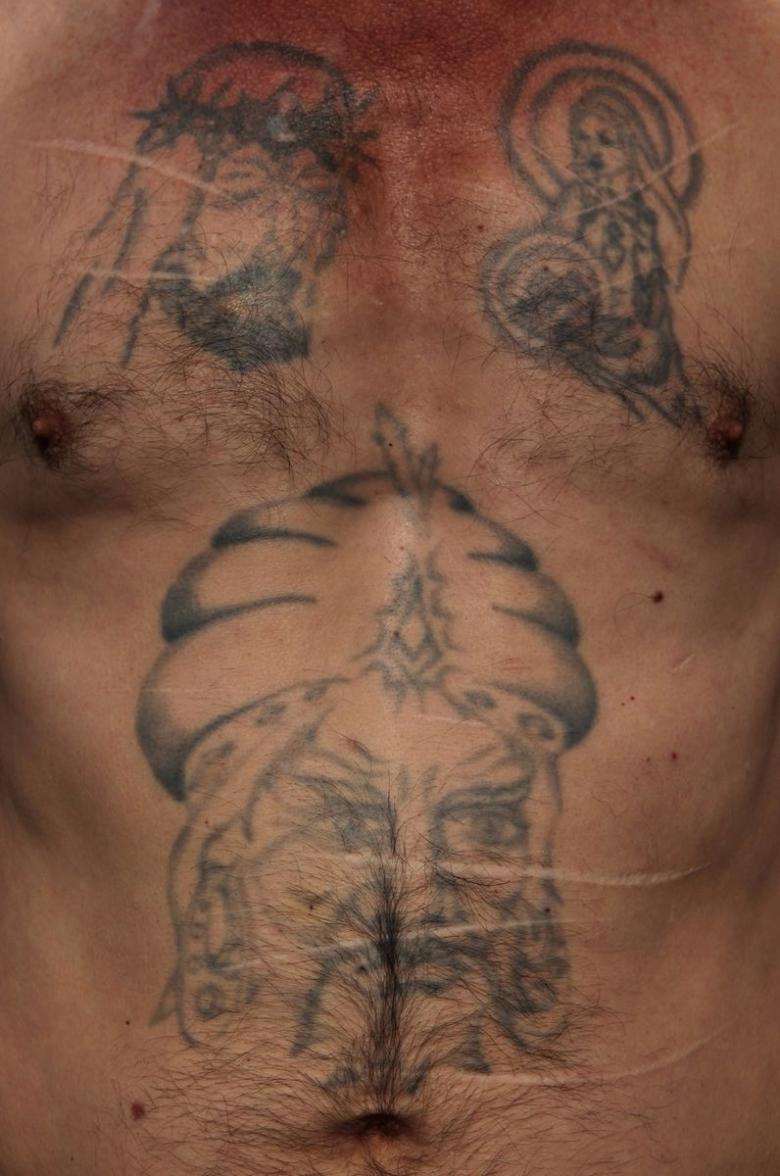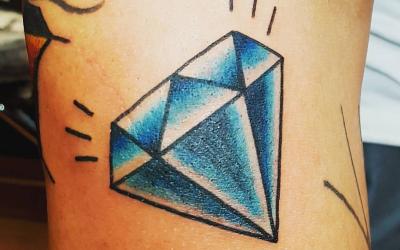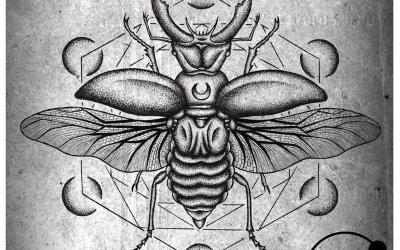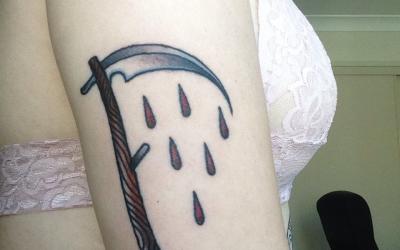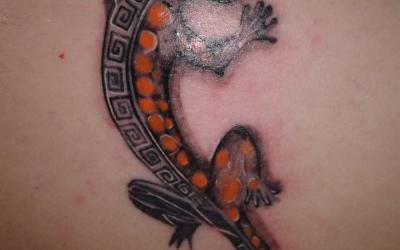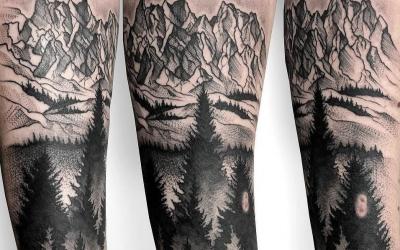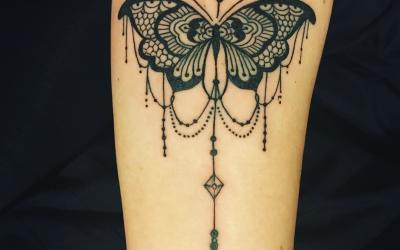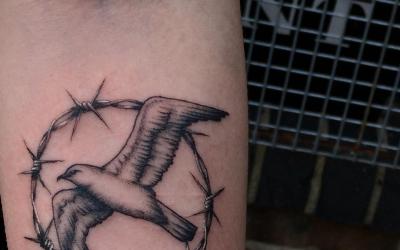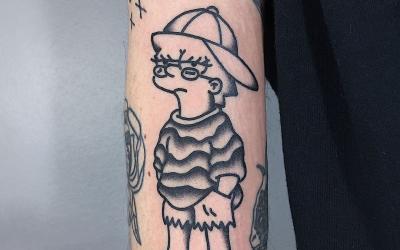Prison tattoos - meaning, symbolism and interpretation, places of application (on fingers, hands, shoulder, back), interesting sketches
The criminal community in prison lives by its own rules. There is a strict hierarchy in prisons and the inmates are divided into certain castes. In order to distinguish these castes, the inmates get tattoos on their skin. The tattoo usually signifies the prisoner's rank: elite or relegated, "roosters," or "sixes.
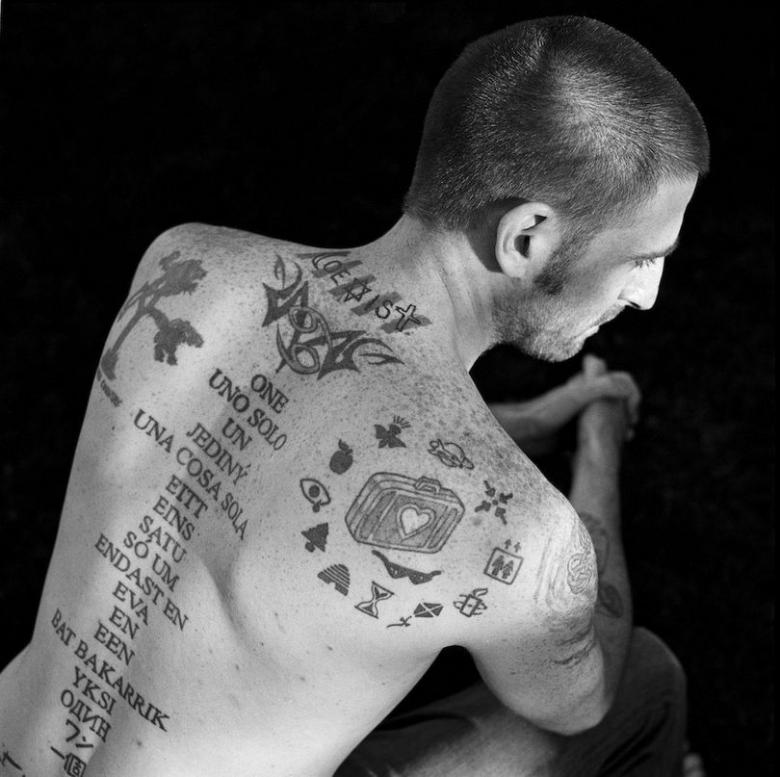
In-zone tattoos are as unalterable an attribute of a prisoner as thieves' lingo is for thieves.
Prison tattoos in other countries
The meaning of prison tattoos is not unequivocal, with different countries treating tattoos differently. For example, in the U.S., inmates apply tattoos depending on their racial identity.
- Vivid representatives of such caste are the "Aryan Brotherhood", the Ku Klux Klan, the "Nazi Rebels" from Southern California. All of them are characterized by drawing swastikas, four-leaf clovers, three sixes and similar militaristic paraphernalia on their skin.
- In contrast to them operates a group of African-Americans - the "Black Power. They put tattoos in the form of inscriptions on the back of the hand and knuckles, they put African signs as a symbol of respect for ancestors.
- Between them, the Hispanics stand as a separate island. These prisoners have religious tattoos - Jesus, his mother, crosses, rosaries, and sometimes biblical scenes or portraits of loved ones.
- Finally, not the largest, but no less important group are the Asians. Tattoos are tattooed depending on their origin: the Japanese have Japanese demons and geishas, the Chinese have dragons.

The Japanese, for example, have a negative attitude toward tattoos. In their opinion, a decent person should not have tattoos. Such philistine thinking may be connected with the fact that for decades the local mafia (Yakuza) could keep entire cities under its hood.

The members of the gang were, as a rule, completely full of tattoos. And distinctive tattoos were also worn by family members not involved in the criminal business. For them, tattoos were a sign of immunity and their origins.
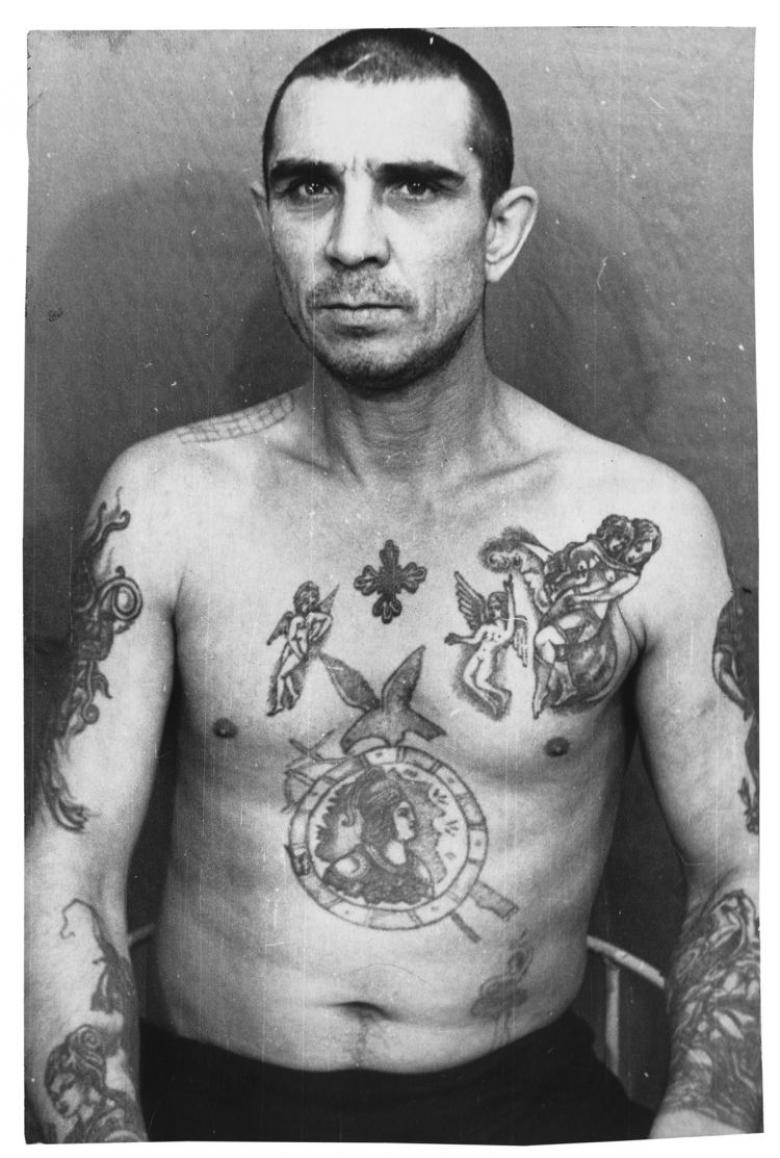
Tattoos in Russian prisons
Zone tattoos always carry one meaning or another. These can be images, portraits of loved ones or idols, and also apply can and inscriptions that complete the body image.

Abbreviations are especially popular:
- WILD - revenge for everything to a cop;
- JUG - a young robber;
- PEACE - I will be corrected by firing squad;
- TMJ - prison gets in the way of life;
- NKVD - no friendship is stronger than a thief's friendship;
- CLOT - vow to love one (one) you (a little romantic).

A few inscriptions:
- "The most important thing in the zone is a thief in the law."
- "Murder is not murder."
- "Born to torment, I don't need happiness."
- "I will not forget my mother" and so on.

Ring Tattoo
The ring tattoo means a lot in the prison hierarchy. Prisoners can stuff such designs at will. But some are tattooed by force. For example, they may be those of inferior rank in prison - a rapist, a snitch (an image of a dog with the caption "Mentor from the presshut") or a homosexual (a cockerel). The most interesting thing is that even if the prisoner goes to another prison, his status remains the same.
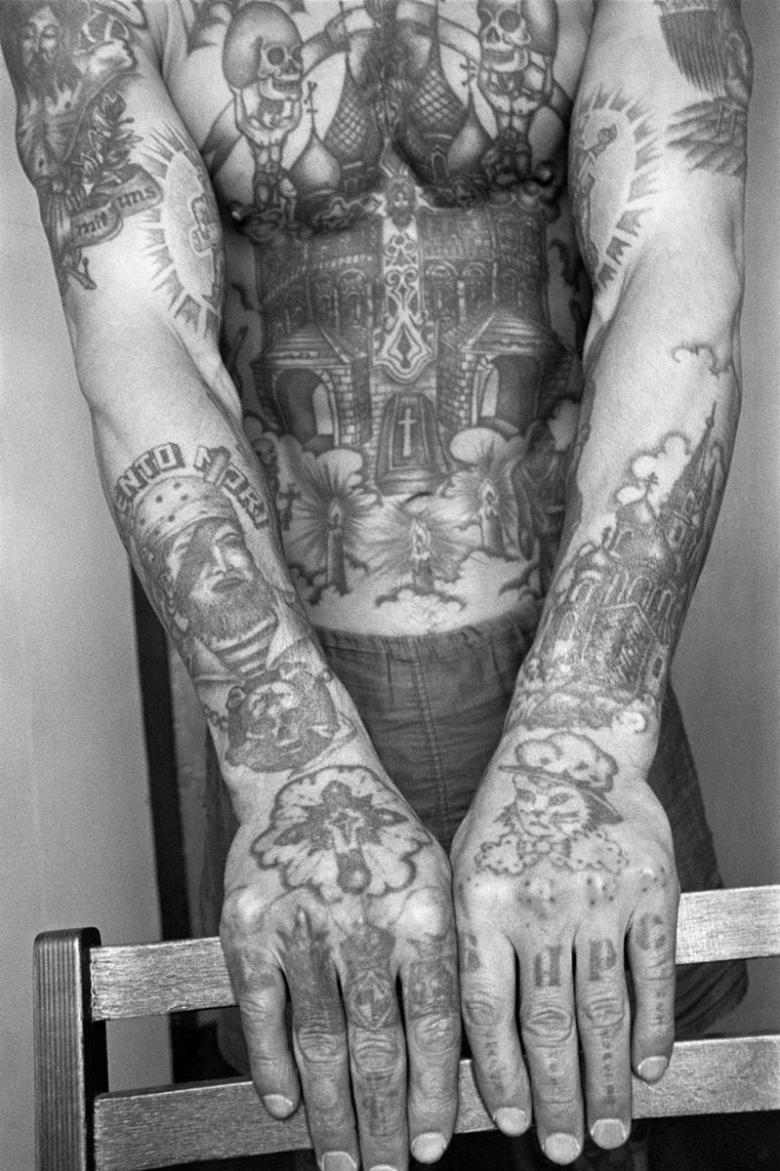
A ring is put on the finger, and the signs inside it indicate the offender's status.
- The symbol "denied" characterizes a detainee who does not agree with the police, moreover, he is hostile to them. Such a prisoner does not understand those who wish to atone for their sins; he will never change. People with this ring belong to the thieving elite. It looks like a rhombus divided into four parts, and the two triangles on the diagonal are painted black.
- The "Man" is given to someone who has not achieved a certain authority among thieves, but has been true to his principles. A man is tattooed in the shape of a diamond with a black vertical line in the middle.
- Quite a common tattoo that almost all former convicts have. "Was incarcerated" - a black square with a white line down the diagonal.
- "On trial for murder" - depicts a knife handle with a snake wrapped around it.

The rest of the zonal tattoos
In addition to rings, inscriptions, acronyms, prisoners stuffed and images that encapsulate the deeper meaning.
- Shackle tattoos signify that their wearer is serving his or her sentence for more than five years under a serious article. Each ring on the shackles corresponds to a year of incarceration.
- The tattoo of a devil symbolizes fearlessness and an irrepressible desire to survive in any situation. A demon sitting on the moon suggests that a person will not lose heart even in the most abysmal situation (even from outer space to find a way out).
- However, a tattoo of the devil undressing a woman, or a devil in the same occupation can mean a downcast convict.
- A full-back devil characterizes a person who has a certain thieving authority in places of imprisonment. The convict wants to show his cunning, cunning.

There are also moments when the prisoner realizes the gravity of his crime and repents. Then he can score a tattoo of a crying killer.
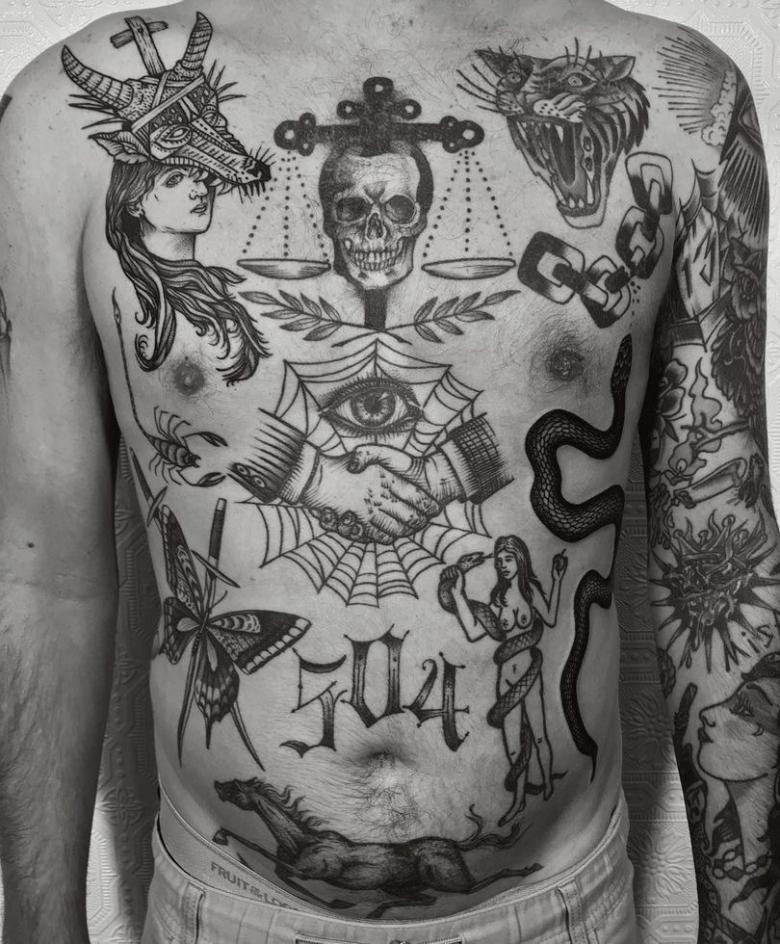
Ways to Apply Tattoos
Due to the strict regime in places of incarceration, the ways in which tattoos are applied are amazing in their sophistication. All tattoos are made exclusively by hand and by means that the average person does not attach importance to.
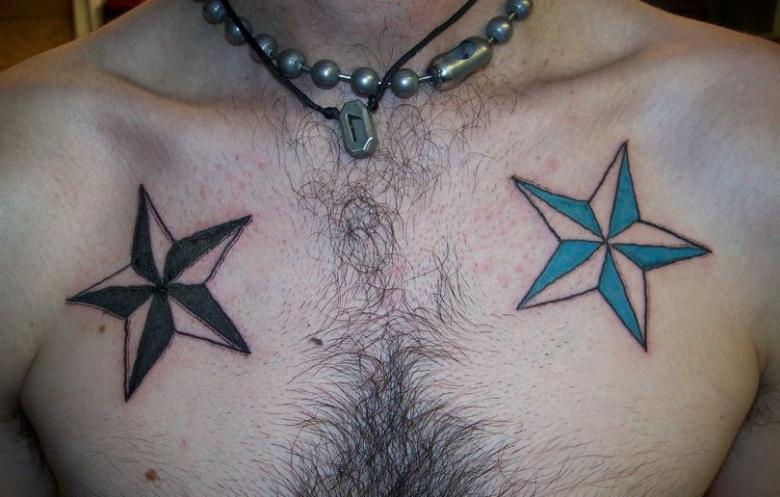
As a rule, needles on sticks or matches are used. They are dipped in ink and punctured point by point into the skin. If there are no needles, cunning prisoners may use wires or any other thin object from which a point can be fashioned. Well, if there is no ink or ink, a paste of soot and sugar diluted in urine or water is stirred.
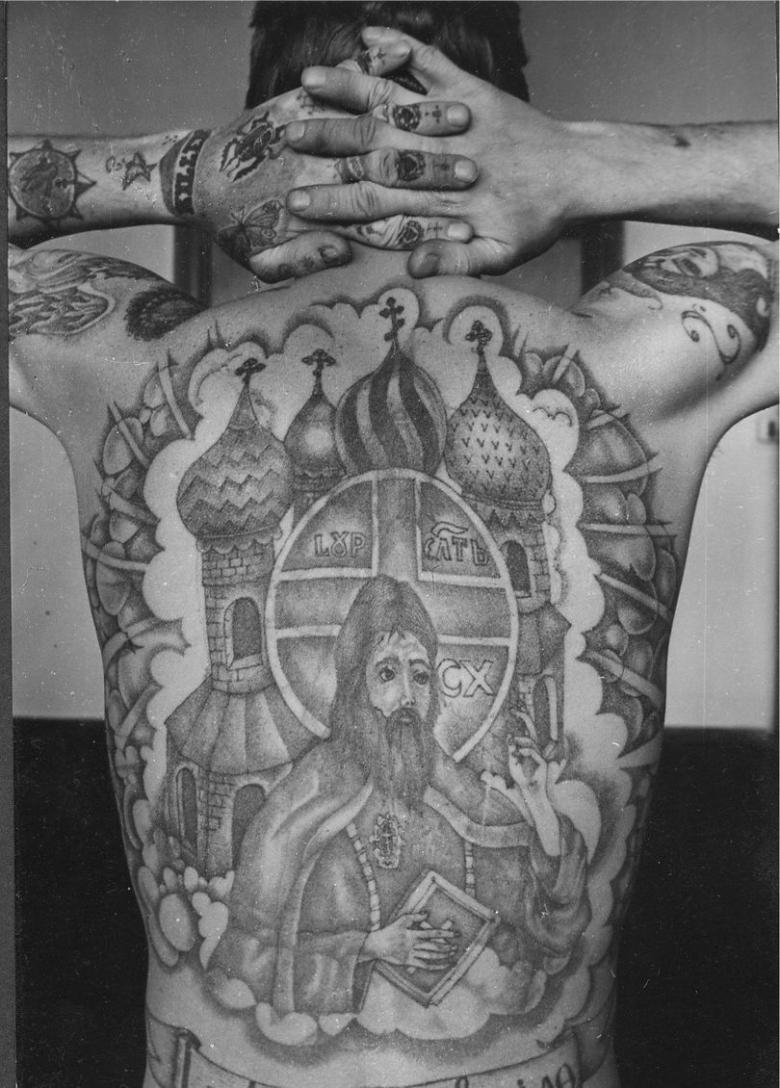
Sometimes teenagers can also "naively" apply tattoos to themselves, not suspecting their true meaning, as outside of the criminal environment their subject matter is seen as completely harmless. Sometimes would-be inmates may tattoo themselves in advance, hoping for honor or at least a quiet existence in the prison world. But this rarely ever really helps.

